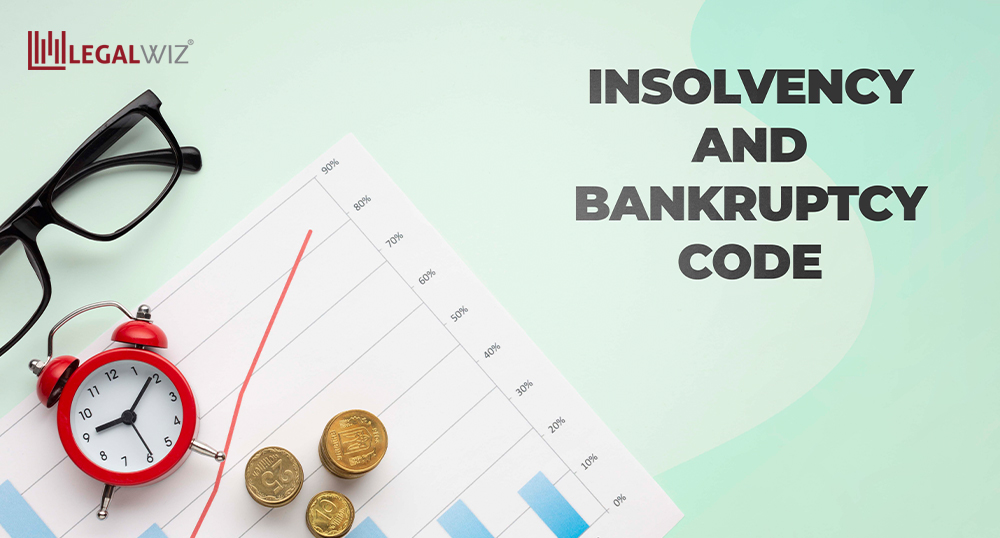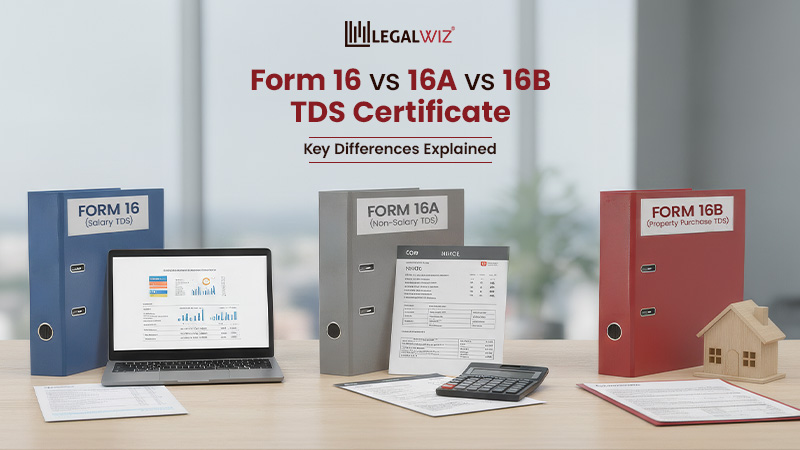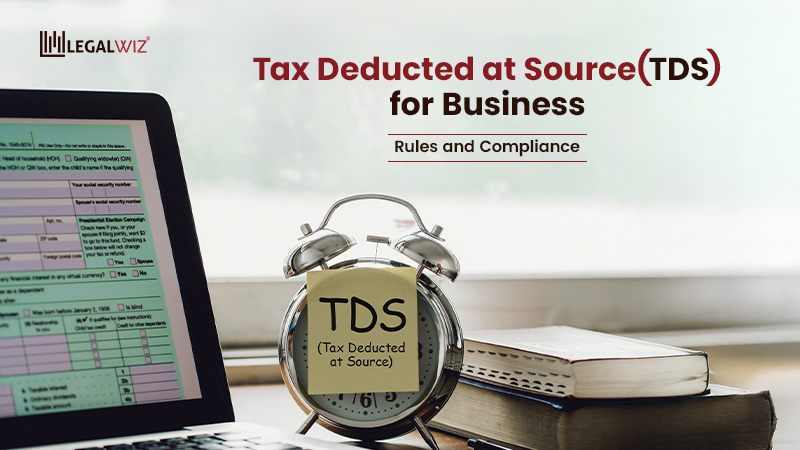IBC Threshold Increase: Prospective or Retrospective?
1. INTRODUCTION
The article seeks to analyse effect of the recent notification dated 24.03.2020, by way of which Central Government has increased the minimum threshold for initiation of Corporate Insolvency Resolution Process (‘CIRP’) against corporate debtors, under the Insolvency and Bankruptcy Code, 2016 (as amended) (‘hereinafter referred to as the ‘Code’)1. The present article focuses on analysing the nature of this notification and its impact on various stakeholders involved in the resolution process. By way of this notification the Central Government has increased the minimum threshold limit for initiation of CIRP against a corporate debtor to one crore rupees by exercising powers conferred on it by proviso to Section 4 of the Code. Section 4 of the Code reads as follows:
“Section 4. Application of this Part. – (1) This Part shall apply to matters relating to the insolvency and liquidation of corporate debtors where the minimum amount of the default is one lakh rupees: Provided that the Central Government may, by notification, specify the minimum amount of default of higher value which shall not be more than one crore rupees.”
By virtue of the said notification, Section 4 of the Code shall now have to be read in consonance with the said notification and the earlier minimum threshold of only one lakh rupees shall not apply.
2. OBJECTIVE OF THE NOTIFICATION
The present notification was announced by the Finance Minister, Nirmala Sitharaman, while elaborating on various measures taken by the government to give some relief to small enterprises and to strengthen the economy in general amidst the prevailing economic and overall uncertainty caused due to the outbreak of corona virus.2 It is necessary to analyse the background of this notification and to understand the reasons for prescribing the highest possible threshold permissible under Section 4 of the Code.
In February, 2020, the Insolvency Law Committee submitted its report to the Ministry of Corporate Affairs taking a holistic review of the Code and recognising the problems faced by Tribunals in implementing the scheme of the Code. In the said Report, on the issue of calculating threshold for default, the Committee felt it appropriate to recommend an increase in minimum threshold for initiation of CIRP against a corporate debtor to fifty lakhs.3 Main reasons recorded by the Committee in its Report for making these recommendation are as follows:
- Due to an excessively low threshold of only one lakh rupees, a large number of petty applications were being filed against corporate entities for initiation of CIRP. Adopting such a low threshold seemed unfeasible considering the excessive pressure it put on judiciary, leading to delay in hearing matters. Considering that time bound resolution is the most peculiar feature of the Code, the factum of delay in admitting and hearing matters seems to have weighed heavily with the Committee while making these recommendations.
- Adopting a minimum threshold of one lakh rupees would enable creditors with such a minimal debt to push otherwise solvent companies into CIRP.4 The Committee in its earlier report5 had noticed that the scheme prescribed under the Code for resolution of debt involving appointment of Interim Resolution Professional entails higher costs as compared to other debt recovery mechanisms. This becomes true specially when the amount of debt is very low and the CIRP costs that the debtor shall have to bear for resolution of such debt shall be much more than the amount of debt itself. Due to lack of this cost and benefit balance, even a solvent company becomes more prone to financial distress instead of being resolved out of its existing financial crisis. Considering this aspect, the committee recommended a minimum threshold of fifty lakh rupees to initiate CIRP against a corporate debtor. Further, an impression can be gathered on meaningful reading of recommendations, more particularly paragraph 2.5, that the committee has also recommended a separate threshold of five lakh rupees for initiation of CIRP against a Micro, Small or Medium Enterprise registered under the Micro, Small and Medium Enterprises Development Act, 2006.
As far as the present notification dated 24.3.2020 issued by the Central Government is concerned, it does not appear to be strictly in consonance with the recommendations of Insolvency Law Committee as it has instead prescribed the highest possible and a blanket minimum threshold of one crore rupees for initiation of CIRP against any corporate debtor. No separate limit has been prescribed for MSMEs who are also operational creditors.
3. IMPACT OF INCREASED THRESHOLD: IS IT COUNTER-INTUITIVE TO THE OBJECT AND PURPOSE OF THE CODE?
Increase in minimum threshold of default for initiation of CIRP against a corporate debtor would immensely decrease the number of applications being filed with the Tribunal, thus achieving at least one objective of reduction of burden on judiciary. At the same time, it would act as a protective measure for MSMEs since it would preclude small creditors from filing applications against them. Moreover, reduction of burden on judiciary comes at the cost of many small creditors, who shall no more have access to this speedy method of debt resolution. The only other remedies available to small creditors would then be to file a civil suit for recovery of their debt or in some cases pursue alternate dispute resolution (‘ADR’). Having said that one cannot shy away from the fact that civil courts also suffer from huge pendency of cases and recovery of money is likely to be very slow as compared to resolution of debt under the Code. Even if parties decide to opt for ADR, it is infact an expensive way of dispute resolution.
In cases where CIRP has been initiated against a corporate debtor at the instance of another creditor meeting the minimum threshold, a creditor who does not fulfil the threshold will not be able to pursue/file an independent civil suit by virtue of Section 14 of the Code. Once the moratorium is declared, this creditor shall also have to fall in line with all other creditors and abide by the provisions of Code for resolution of his debt. In this way, a creditor who does not meet the threshold criteria is at the mercy of other creditors having a default of one crore rupees or more for resolution of its debt. As far as MSMEs are concerned, the flip side is that in cases where MSMEs are themselves creditors not qualifying the threshold, they shall also stand precluded from taking action against other corporate debtors.6 Thus, in today’s times of economic and financial distress caused due to the pandemic, it is not sure as to whether increase in minimum threshold will be counter-productive to interest of operational creditors including MSMEs.
In opinion of the authors the notification is extremely detrimental to creditors whose recoverable amount is less than one crore rupees. The Code has broadly envisaged two kinds of creditors- operational creditors and financial creditors. While financial creditors7generally include banks and financial institutions to whom financial debt8 is owed, operational creditors9 are those creditors who supply goods and services to the corporate debtor for regular business operations and to whom an operational debt10 is owed.
In general practice and not as a matter of rule, very often it is seen that financial creditors generally file applications for huge default amounts and would easily qualify the threshold while operational creditors are usually the ones who are owed small amounts of money. Further, scheme of the Code is such that financial creditors have been given the leverage of either filing application individually or with defaulted debts of other financial creditors. For the purpose of a financial creditor, a default includes a default in respect of a financial debt owed not only to that particular financial creditor but to any other financial creditor.11 Thus, if Bank A owes thirty lakh rupees and Bank B owes seventy lakh rupees, Bank A can file an application by tagging along with Bank B so as to reach a minimum threshold of one crore rupees.
However, operational creditors are mandated to file applications individually and one operational creditor cannot club its claim with another operational creditor to qualify the minimum threshold for default.12 The only exception exists in the case of employees/workmen, who as per Note to Form 5 prescribed under Adjudicating Authority Rules, are allowed to file applications either in an individual capacity or in a joint capacity through their authorised representative.13 However, in case of Suresh Narayan Singh v. Tayo Rolls Limited14, National Company Law Appellate Tribunal has held as follows:
“4. …where workmen/employees are ‘operational creditors’, the application may be made either by an ‘operational creditor’ in an individual capacity or in a joint capacity by one of them who is duly authorised for such purpose…..
‘7. …Only if in an individual claim of ‘operational creditor’ the amount of debt is less than one lakh rupees, it can be rejected being not maintainable.”
The Appellate Tribunal has made it clear that claims can be clubbed only when individual claims qualify the threshold mentioned in Section 4 of the Code. Such clubbing seems to have been allowed and provided for in the statute only with a view to administratively ease the adjudication of claims. In the case of J.K Jute Mill Mazdoor Morcha v. Juggilal Kamlapat Jute Mills Company Limited15, Hon’ble Apex Court has also upheld the right of a trade union to file an application on behalf of employees/workers in a representational capacity but the issue of individual threshold has not been dealt with in this case. Thus, as on date the case of Suresh Narayan Singh v. Tayo Rolls Limited16 lays down the position of law and such position is that employees of a company can club and file their claims provided that the amount payable to them by the corporate debtor individually is one crore rupees or more. This would oust a lot of employees of the corporate debtor from the process since not many employees have an individual claim of salary as high as one crore or more.
The Insolvency and Bankruptcy Code, 2016 has been passed after great deliberation and pursuant to various committee reports, the most important of which is the report of the Bankruptcy Law Reforms Committee of November, 2015.17 The Statement of Objects and Reasons of the Code reads as under:
“1……..The existing framework for insolvency and bankruptcy is inadequate, ineffective and results in undue delays in resolution, therefore, the proposed legislation.
2. The objective of the Insolvency and Bankruptcy Code, 2015 is to consolidate and amend the laws relating to reorganization and insolvency resolution of corporate persons, partnership firms and individuals in a time bound manner for maximization of value of assets of such persons, to promote entrepreneurship, availability of credit and balance the interests of all the stakeholders including alteration in the priority of payment of government dues and to establish an Insolvency and Bankruptcy Fund, and matters connected therewith or incidental thereto. An effective legal framework for timely resolution of insolvency and bankruptcy would support development of credit markets and encourage entrepreneurship. It would also improve Ease of Doing Business, and facilitate more investments leading to higher economic growth and development. (emphasis added)”18
In the authors’ opinion, the aforesaid notification does not seem to be a balanced one since it does not maximise interest of operational creditors and makes them worse off as compared to financial creditors. On reading the Scheme of the Code as well as the Statement of Object and Reasons, it can be seen that due to redundancy of earlier laws and delayed debt recovery, the Code was enacted to ensure that all stakeholders, whether small or big can seek speedy resolution of debt. Due to this notification, the Act shall largely become a remedy of debt resolution for financial creditors, thereby just adding to the list of laws which already exists to assist financial creditors. As the notification takes away the peculiar feature of feasibility and accessibility from the Code, it seems to be discriminatory to a certain group of creditors and is counter-intuitive to the object and purpose of the Act, which otherwise provides for an inclusive approach and resolution of debt of all stakeholders.
4. APPLICABILITY OF THE NOTIFICATION: RETROSPECTIVE OR PROSPECTIVE?
In the recent case of Foseco India Limited v. Om Boseco Products Limited19, Hon’ble National Company Law Tribunal, Kolkata has held the said amendment increasing the threshold for initiation of CIRP to be prospective in nature, stating as follows:
“It is a well settled law that a statute is presumed to be prospective unless it is held to be retrospective, either expressly or by necessary implication. When the amendment to Section 4 of IBC was, inserted a proviso enhancing the pecuniary jurisdiction for filing applications as against small and medium scale industries nowhere in the notification mentioned that its application will be retrospective. Therefore, it appears to me that the amendment shall be considered as prospective and not retrospective”
In the absence of any other judgement on the said subject by any other court of law, the abovementioned case has clarified the
timeline of applicability of the amendment, laying down the position of law. However, it must be noted that the reasoning given in the said judgement regarding prospective application of the said judgement is very brief and the authors seek to analyse this question in depth.
The first question that needs consideration is whether the notification increasing the threshold can be considered to be a substantive change in law, a procedural change law or adjectival in nature. Substantive law refers to a body of rules that creates, defines and regulates rights and liabilities. For instance, right conferred on a party to prefer an appeal against an order is a substantive right conferred by a statute which remains unaffected by subsequent changes in law, unless modified expressly or by necessary implication. On the other hand, procedural law is one that establishes a mechanism for determining those rights and liabilities and a machinery for enforcing them.20 It is seen as a body of rules through which rights are effectuated.21 Unless the language used plainly manifests in express terms or by necessary implication a contrary intention, a statute divesting vested rights is to be construed as prospective, a statute merely procedural is to be construed as retrospective and a statute which while procedural in its character, affects vested rights adversely is to be construed as prospective.22
In opinion of the authors, change in law brought by way of the present notification is substantive in nature as it determines and brings a conclusive end to the rights of those creditors to whom an amount less than one crore rupees is owed. Increased threshold is not merely a mathematical figure but infact takes away the right of
litigants to file an application under the Code for resolution of their debt. Right to file an application under the Code is akin to right to appeal, which has been held to be a substantive right. Unlike law relating to limitation and forum23, the present notification increasing the threshold affects the right to access the remedy under the Code itself and is not just concerned with methodology, time period or procedure of filing an application.
It is settled position of law that in the absence of any specific mention that a legislation or an amendment is retrospective, it shall be treated to be prospective in nature, especially when the amendment is dealing with substantive rights. Similarly, when an amendment is procedural in nature, in the absence of any mention it is to be treated as retrospective, provided that such retrospective application does not lead to absurdity.24 Since change is law brought by way of the present notification is a substantive one and nothing to the contrary has been specified in the notification, it should be deemed to be prospective in nature and should apply to those cases which are filed pursuant to the date of the notification.
Moreover, this increase in threshold has been brought in only by way of a notification which is in the nature of a subordinate legislation, issued by the Central Government in exercise of powers conferred on it under Section 4 of the Code. It is settled position of law that subordinate legislations also apply prospectively unless specifically made to operate with retrospective effect.25 For a subordinate legislation to operate retrospectively, a specific mention must be made about its retrospective applicability, subject of course to confernment of such power by the parent statute.26 Not only is the present notification substantive in nature, it is also a subordinate legislation without having any mention of its retrospective application in the notification issued by the government. Moreover, the present notification does not confer any benefit and is infact detrimental in nature since it tends to exclude a certain group of creditors. As per the well settled Doctrine of Fairness, there exists a presumption against retrospective application of a legislation if it is not beneficial in nature and as such shall apply to the present notification27.
Without prejudice, even assuming that increase in threshold is a procedural change in law, it cannot be deemed to have a retrospective effect because the said change has been brought by way of a subordinate legislation. There is no presumption pertaining to retrospective applicability of a subordinate legislation and in the absence of express mention of the same in the notification it cannot be applied retrospectively even if there exists a presumption of retrospective application in terms of procedural laws. Consequently, in the opinion of the authors the law laid down by the Hon’ble Tribunal in the case of Foseco India stands good.
The notification can be made retrospectively applicable only if the Central Government specifically passes an ordinance to that effect. The constitutional validity of the said ordinance would itself be a matter of question. In the absence of any such clarification in the present notification, it is perhaps not within the domain of the courts to advance on this journey on their own and it would be just and right for the Tribunals and other higher forums to give prospective effect to the said notification in the absence of an express mention of retrospective application.
In any case, it also needs to be ensured that any interpretation given to the notification is in consonance with general rules of construction, is not textually inadmissible and does not lead to absurdity.28 In the present case, if the government by way of an ordinance was to give retrospective effect to the notification, it would be of utmost importance to specify whether such application would apply to all pending application or only to those applications which had yet not been admitted. If it was to apply to all pending applications, then all applications wherein default amount is less than one crore shall would dismissed and those creditors will no longer be able to pursue the remedy under the Code. This would lead to absurdity since a lot of cases which are pending are at an advance stage of CIRP wherein resolution professionals are already discharging their duties as per the Code. Most importantly, it would also render so many creditors remediless since there is no other equally effective remedy for resolution of debt. Hon’ble Apex Court in the case of Rahul Jain v. Rave Scan,29 set aside the judgement passed by National Company Law Appellate Tribunal, retrospectively applying the amended Regulation 38 of Insolvency and Bankruptcy Board of India (Insolvency Resolution Process for Corporate Persons), 2016, on the ground that the amendment became applicable with effect from October, 2018 whereas the resolution process for the corporate debtor had already commenced in January, 2017. Even though there is no explicit discussion on retrospective application of the amendment, the Court seems to have impliedly shown that it is inclined to not disturb cases where CIRP has already been initiated and purposively interpreted the amendment in consonance with the object and purpose of the Code. Yet again in the case of Supraja Textiles Private Limited v. Supraja Textiles Private Limited30 the Hon’ble National Company Law Tribunal, Hyderabad relying on various judgements of the Apex Court held that the amended Section 10(3)(c), even though procedural in nature would apply prospectively and not retrospectively since it would otherwise give rise to new obligations in terms of petitions that were already filed. Thus, even if an ordinance giving retrospective application to the present subordinate legislation is introduced by the law making body, it should be kept in mind that the outcome or impact flowing from it shall be purposive and should not lead to absurdity.31
In the concurring opinion of the authors with the law laid down by the Hon’ble Tribunal in the case of Foseco India, the amendment is a substantive change is law and thereby prospective in nature. Having said that an effort has been made to show that even if the notification was assumed to be procedural in nature it is not capable of retrospective application in this peculiar case. The interpretation of the said notification by other Hon’ble Tribunals as well as higher forums remains much awaited.
Note: The article is based on personal views of the authors and is not intended for any other legal or business purpose.
Footnotes
1 Notification No. REGD. NO. D. L – 33004/99,
Ministry of Corporate Affairs, The Gazette of India, Available at https://www.ibbi.gov.in/uploads/legalframwork/48bf32150f5d6b30477b74f652964edc.pdf
2 Nirmala Sitharaman Speech Updates: Government Defers
Tax Filing, Company Law Compliance Deadlines; Bloomberg Quint, Available at:
https://www.bloombergquint.com/economy-finance/live-finance-minister-speech-fm[1]nirmala-sitharaman-to-response-lok-sabha-on-finance-bill-shorty-measures-cash-fiscal-announcement-businesses-tax-break-coronavirus-outbreak
3 Ministry of Corporate Affairs, Report of the Insolvency Law Committee, February 2020. Available at: http://www.mca.gov.in/Ministry/pdf/ICLReport_05032020.pdf
4 Ibid.
5 Ministry of Finance, Interim Report of the Bankruptcy Law Reforms Committee (2015), Available at:
https://www.finmin.nic.in/sites/default/files/Interim_Report_BLRC_0.pdf
6 “Implications of Increased threshold under the Insolvency and Bankruptcy Code” by Akshay Sharma and Kunwar Surya Pratap,
(2020). Available at: https://www.scconline.com/blog/post/2020/04/10/implications-of-increased-threshold-under-the-insolvency-and-bankruptcy-code/
7 Section 5(7) of the Insolvency and Bankruptcy Code, 2016 (as amended) defines a financial creditor and reads as follows:
“(7) “financial creditor” means any person to whom a financial debt is owed and includes a person to whom such debt
has been legally assigned or transferred to;”
8 Section 5(8) of the Insolvency and Bankruptcy Code, 2016 (as amended) defines financial debt and reads as follows:
“(8) “financial debt” means a debt alongwith interest, if any, which is disbursed against the consideration for
the time value of money and includes–
- money borrowed against the payment of interest;
- any amount raised by acceptance under any acceptance
credit facility or its dematerialised equivalent; - any amount raised pursuant to any note purchase
facility or the issue of bonds, notes, debentures, loan stock or any
similar instrument; - the amount of any liability in respect of any lease or
hire purchase contract which is deemed as a finance or capital lease under
the Indian Accounting Standards or such other accounting standards as may
be prescribed; - receivables sold or discounted other than any
receivables sold on non-recourse basis; (f) any amount raised under any
other transaction, including any forward sale or purchase agreement, having the commercial effect of a borrowing;
1[Explanation. -For the purposes of
this sub-clause, –
(i) any amount raised from an allottee under a real estate
project shall be deemed to be an amount having the commercial effect of a borrowing;
(ii) the expressions, “allottee” and “real estate project” shall have the meanings respectively assigned to them in clauses (d) and (zn) of section 2 of the Real Estate (Regulation and Development) Act, 2016 (16 of
2016);]
- any derivative transaction entered into in connection with protection against or benefit from fluctuation in any rate or price and for calculating the value of any derivative transaction, only the market value of such transaction shall be taken into account;
- any counter-indemnity obligation in respect of a guarantee, indemnity, bond, documentary letter of credit or any other instrument issued by a bank or financial institution;
- the amount of any liability in respect of any of the guarantee or indemnity for any of the items referred to in sub-clause (a) to (h) of this clause;”
9 Section 5(20) of the Insolvency and Bankruptcy Code, 2016 (as amended) defines an operational creditor and reads as follows:
“(20) “operational creditor” means a person to whom an operational debt is owed and includes any person to whom such
debt has been legally assigned or transferred;”
10 Section 5(21) of the Insolvency and Bankruptcy Code, 2016 (as amended) defines an operational debt and reads as follows:
“(21) “operational debt” means a claim in respect of the provision of goods or services including employment or a debt in respect of the 2 [payment] of dues arising under any law for the time being in force and payable to the Central Government, any State Government or any local authority;
11 Section 7(1) of the Insolvency and Bankruptcy Code, 2016 (as amended) reads as follows: “7. Initiation of corporate insolvency resolution process by financial creditor. (1) A financial creditor either by itself or jointly with [other financial creditors, or any other person on behalf of the financial creditor, as may be notified by the Central
Government] may file an application for initiating corporate insolvency resolution process against a corporate debtor before the Adjudicating Authority when a
default has occurred…..
Explanation. – For the purposes of this sub-section, a default includes a default in respect of a financial debt owed not only to the applicant financial creditor but to any other financial creditor of the corporate debtor…”
12 Section 9 (1) of the Insolvency and Bankruptcy Code, 2016 (as amended) reads as follows:
9. Application for initiation of corporate insolvency resolution process by operational creditor. –
(1) After the expiry of the period of ten days from the date of delivery of the notice or invoice demanding payment under sub-section (1) of section 8, if the operational creditor does not receive payment from the corporate debtor or notice of the dispute under subsection (2) of section 8, the operational creditor may file an application
before the Adjudicating Authority for initiating a corporate insolvency resolution process….”
13 “Have the IBC doors shut for workmen & employees?”,
Ramchandra Madan, (2020), Available at:
https://www.scconline.com/blog/post/2020/04/22/have-the-ibc-doors-shut-for-workmen-employees/#_ftn3
14 2018 SCC Online NCLAT 557.
15 (2019) 11 SCC 332
16 Supra note 14.
17 Innoventive Industries Limited v. ICICI Bank, (2018)
1 SCC 407.
18 Supra note 7.
19 CP (IB) No. 1735/KB/2019, National Company Law Tribunal.
Kolkata.
20 Thirumalai Chemicals Ltd. v. Union of India, (2011)
6 SCC 739
21 Shanti Devi v. Krishan Lai, 1979 All L. J. 651.
22 Supra note 20.
23 Hitendra Vishnu Thakur v. State of Maharashtra,
(1994) 4 SCC 602; Securities and Exchange Board of India v. Classic Credit
Limited, (2018) 13 SCC 1; Thirumalai Chemicals Ltd. v. Union of India,
(2011) 6 SCC 739.
24 Collector v. K. Govindaraj, (2016) 4 SCC 763.
25 Mahavir Vegetable Oils (P) Limited v. State of Haryana,
(2006) 3 SCC 620
26 Global Energy Limited & Anr. v. Central Electricity
Regulatory Commission, (2009) 15 SCC 570.
27 Securities and Exchange Board of India v. Alliance
Finstock Limited, (2015) 16 SCC 731.
26 Global Energy Limited & Anr. v. Central Electricity
Regulatory Commission, (2009) 15 SCC 570.
27 Securities and Exchange Board of India v. Alliance
Finstock Limited, (2015) 16 SCC 731.
30 CP (IB) No. 188/10/HDB/2018, National Company Law Tribunal,
Hyderabad.
31 Corporation Bank v. Saraswati Abharansala
and Another, (2009) 1 SCC 540
Mr. Maulik Nanavati & Ms. Manvi Damle
Mr. Nanavati is senior lawyer having a widespread practice of Commercial and Corporate Laws. He is also an expert in the field of Criminal Law and Dispute Resolution. Apart from having a successful practice in these areas, he is a panel advocate for various government departments and is also a special counsel for the State Tax Department, Gujarat. He regularly appears before the Hon'ble Supreme Court of India, High Courts as well as various quasi-judicial authorities including the National Company Law Tribunal and Appellate Tribunal and Ms. Manvi Damle is Senior associate at Nanavati & Co., Ahmedabad. Practicing advocate having experience of appearing before the Hon'ble Supreme Court of India, various High Courts across the country as well as National Company Law Tribunals, Appellate Tribunal and many other quasi-judicial authorities.







